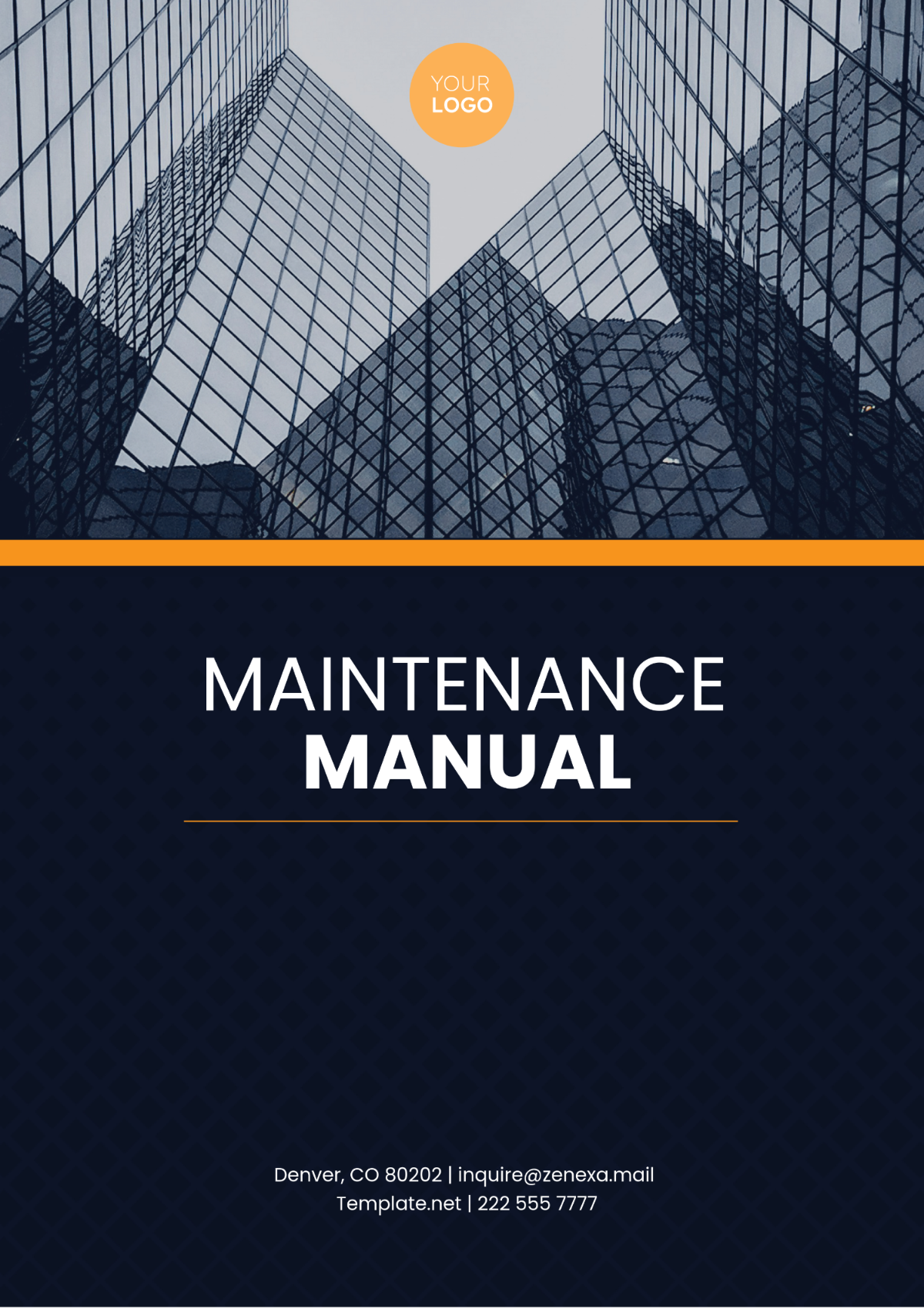Free Maintenance Manual

I. Introduction
In this section, [YOUR COMPANY NAME] provides an overview of the Maintenance Manual, its purpose, and who it is intended for. This manual serves as a comprehensive guide for [YOUR DEPARTMENT] personnel responsible for the maintenance of [YOUR COMPANY NAME]'s equipment and facilities. The Maintenance Manual is designed to streamline maintenance processes, ensure consistency in procedures, and optimize equipment performance. By adhering to the guidelines outlined in this manual, [YOUR DEPARTMENT] can effectively maintain equipment, minimize downtime, and prolong the lifespan of assets.
II. Scope of Maintenance Activities
This section outlines the scope of maintenance activities covered in the manual. It includes preventive maintenance, corrective maintenance, and predictive maintenance procedures. [YOUR DEPARTMENT] personnel should refer to this section to understand their responsibilities and the types of maintenance tasks they are expected to perform.
Scope of Maintenance Activities
Preventive Maintenance: Regular inspections, servicing, and repairs to prevent equipment failure.
Corrective Maintenance: Immediate repairs to address malfunctions or breakdowns.
Predictive Maintenance: Utilization of data and analytics to forecast equipment failures and schedule maintenance proactively.
III. Roles and Responsibilities
Here, [YOUR COMPANY NAME] defines the roles and responsibilities of individuals involved in the maintenance process. Clear delineation of responsibilities ensures accountability and efficient execution of maintenance tasks.
Roles and Responsibilities
Maintenance Manager: Oversees maintenance operations, allocates resources, and ensures compliance with maintenance schedules.
Maintenance Technicians: Perform routine inspections, maintenance tasks, and repairs as per established procedures.
Quality Assurance Team: Conducts audits and quality checks to verify compliance with maintenance standards and procedures.
IV. Maintenance Procedures
This section details step-by-step procedures for conducting various maintenance tasks. [YOUR DEPARTMENT] personnel should follow these procedures meticulously to ensure consistency and effectiveness in maintenance activities.
Maintenance Procedures
Equipment Inspection: Regular inspections to identify signs of wear, damage, or malfunction.
Lubrication: Proper lubrication of moving parts to reduce friction and prevent premature wear.
Filter Replacement: Scheduled replacement of filters to maintain equipment efficiency and performance.
Calibration: Calibration of instruments and equipment to ensure accuracy and reliability.
Emergency Response: Protocol for responding to emergency maintenance situations and minimizing downtime.
V. Documentation and Record Keeping
In this section, [YOUR COMPANY NAME] emphasizes the importance of documentation and record-keeping in the maintenance process. Accurate record-keeping facilitates traceability, analysis of maintenance trends, and compliance with regulatory requirements.
Documentation and Record Keeping
Maintenance Logs: Detailed records of maintenance activities, including dates, tasks performed, and equipment status.
Work Orders: Formal requests for maintenance tasks, including priority levels and deadlines.
Equipment Manuals: Reference materials containing specifications, operating instructions, and troubleshooting guides.
VI. Training and Development
[YOUR COMPANY NAME] recognizes the significance of ongoing training and development for [YOUR DEPARTMENT] personnel. This section outlines training programs, resources, and opportunities aimed at enhancing the skills and knowledge of maintenance personnel.
Training and Development Initiatives
Technical Training: Hands-on training sessions covering equipment operation, maintenance procedures, and safety protocols.
Certification Programs: Opportunities for maintenance technicians to obtain industry certifications and enhance their credentials.
Continuous Learning: Access to online resources, workshops, and seminars to stay updated on emerging technologies and best practices.
VII. Conclusion
In conclusion, the Maintenance Manual serves as a comprehensive guide for [YOUR DEPARTMENT] personnel, providing standardized procedures, safety protocols, and best practices for effective maintenance activities. By adhering to the guidelines outlined in this manual, [YOUR DEPARTMENT] can uphold [YOUR COMPANY NAME]'s commitment to operational excellence, equipment reliability, and employee safety.
- 100% Customizable, free editor
- Access 1 Million+ Templates, photo’s & graphics
- Download or share as a template
- Click and replace photos, graphics, text, backgrounds
- Resize, crop, AI write & more
- Access advanced editor
Discover the ultimate solution for crafting meticulous maintenance manuals effortlessly with Template.net's Maintenance Manual Template. This editable and customizable template empowers you to tailor each detail to perfection. Seamlessly edit in our Ai Editor Tool to streamline your workflow and create professional-grade manuals with ease.





























